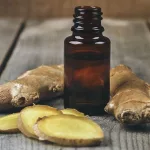You’ve just twisted your ankle, had a tooth pulled, or are sprawled on the couch after a minor surgery. The pain thumps like a drum, and the first thought that comes to mind is, “I need something that works – fast.” Before you reach for a prescription pad or a bottle of pills you’ve never heard of, let’s pause together. Below you’ll find a friendly, no‑fluff guide to the best non‑opioid acute pain medication options that actually work, keep you safe, and stay easy to get.
In the next few minutes we’ll walk through why non‑opioids are often the smartest first choice, break down the most common over‑the‑counter (OTC) relievers, match each drug to the type of pain you might be feeling, and give you a cheat‑sheet of side‑effects and safety tips. Think of this as a coffee‑shop chat with a knowledgeable friend who happens to love evidence‑based medicine. Ready? Let’s dive in.
Why Choose Non‑Opioids
Non‑opioid acute pain medication isn’t just a buzzword; it’s a proven strategy that many clinicians now call “opioid‑sparing” or “multimodal analgesia.” The idea is simple: use drugs that work well — and use them in ways that reduce the need for stronger, riskier opioids.
According to a CDC guideline on acute pain updated in 2025, non‑opioid therapies are “at least as effective” as opioids for many common acute pain conditions such as low‑back strain, dental pain, kidney‑stone colic, and minor postoperative discomfort. That means you can get relief without the dizziness, constipation, or dependence risk that sometimes come with opioids.
Why does this matter? Besides safety, non‑opioids are usually cheaper, easier to obtain, and have a proven track record. Dr. Eric S. Schwenk, MD, an expert who helped author the latest UpToDate review on non‑opioid pharmacotherapy, notes that “most patients with acute pain achieve sufficient control with OTC analgesics when the medication, dose, and timing are tailored to the injury.” That’s the core of what we’ll help you master.
Common OTC Options
| Medication | Typical OTC Dose | Maximum Daily Dose | Primary Uses | Major Risks |
|---|---|---|---|---|
| Acetaminophen | 500‑1000 mg every 6 h | ≤ 3000 mg (adjust for liver disease) | Headache, dental pain, mild musculoskeletal pain | Hepatotoxicity, especially with alcohol |
| Ibuprofen (NSAID) | 200‑400 mg every 6‑8 h | 1200 mg OTC (up to 3200 mg prescription) | Joint sprain, muscle strain, menstrual cramps | GI bleeding, renal impairment, ↑ cardiovascular risk |
| Naproxen (NSAID) | 220‑440 mg every 8‑12 h | 660 mg OTC (up to 1500 mg prescription) | Back pain, arthritis flare, sports injuries | Same as ibuprofen, but longer half‑life |
| Topical NSAID (e.g., diclofenac gel) | Apply 2‑4 g to affected area 3‑4 times/day | 2 g/day | Localized joint or soft‑tissue pain | Skin irritation, rare systemic effects |
Acetaminophen
Acetaminophen (often known by the brand name Tylenol) is the go‑to for people who can’t tolerate stomach irritation. Its pain‑killing magic works mainly in the brain, so it’s gentle on the gut. The key to staying safe is watching the total amount you take each day. For most adults, the ceiling is 3000 mg—lower if you have liver disease or regularly drink alcohol. A useful rule of thumb is to never combine multiple acetaminophen‑containing products (think cold medicine + regular tablets) without checking the labels.
NSAIDs for Pain
Nonsteroidal anti‑inflammatory drugs (NSAIDs) like ibuprofen (Advil, Motrin) and naproxen (Aleve) not only dull pain but also cut inflammation, which is why they’re fantastic for sprains, strains, and post‑exercise soreness. The most common side‑effects are stomach upset and, in rare cases, ulcers or kidney strain. Taking the medicine with food, staying hydrated, and using the lowest effective dose can keep those risks at bay.
One of the most asked‑about concerns is ibuprofen side effects. The biggest culprits are gastrointestinal bleeding and kidney stress, especially in people over 65, those with existing kidney disease, or anyone taking blood thinners. If any of those apply, consider acetaminophen or a topical NSAID instead.
Topical NSAIDs
When the pain is localized—think a sore knee after a hike—topical diclofenac gel can give you the anti‑inflammatory power of an oral NSAID but with a fraction of the stomach exposure. The 2020 AAFP/ACP clinical guideline gave topical NSAIDs a strong recommendation as first‑line therapy for musculoskeletal injuries because they “provide comparable analgesia with fewer systemic adverse events.”
Match Medication Type
Not all pain is created equal, so let’s pair the right drug with the right situation. Below is a quick‑look matrix that you can keep on your fridge or your phone.
| Pain Type | First‑Line Choice | Alternative / Adjunct |
|---|---|---|
| Muscle strain or sprain | Ibuprofen or naproxen | Acetaminophen + NSAID stacking |
| Dental extraction pain | Acetaminophen ± ibuprofen | Topical NSAID (diclofenac gel) |
| Kidney‑stone colic | Ibuprofen (if renal function OK) | IV acetaminophen in hospital setting |
| Minor postoperative pain | Acetaminophen + NSAID combo | Low‑dose regional block (see multimodal) |
For example, if you’re nursing a sore ankle after a weekend hike, start with ibuprofen 400 mg every 6 hours (with a snack), and add acetaminophen 500 mg if the pain stays stubborn after a couple of doses. This “stacking” technique lets you stay under the maximum dose for each drug while still hitting the pain from two angles.
Manage Side Effects
Ibuprofen Side Effects
Even the best‑selling pain reliever can cause trouble if not used wisely. Watch for stomach pain, heartburn, or black/tarry stools (a sign of GI bleeding). If you notice any of those, stop the ibuprofen and talk to a healthcare professional. People with a history of ulcers, chronic kidney disease, or high blood pressure should either avoid NSAIDs or use a protective agent such as a proton‑pump inhibitor (PPI) under doctor supervision.
Acetaminophen Toxicity
Too much acetaminophen can silently damage the liver. Early signs include nausea, loss of appetite, and abdominal discomfort. If you ever exceed 3000 mg in a 24‑hour period, call your doctor or poison control right away. Remember: a single extra tablet can push you over the limit.
Drug‑Drug Interactions
Mixed meds can surprise you. NSAIDs can boost the effect of blood thinners like warfarin, increasing bleeding risk. They can also blunt the action of some antihypertensives, making blood pressure harder to control. Acetaminophen is generally safe with most other meds, but combine it cautiously with alcohol.
When to Seek Help
- Severe, worsening pain after 48 hours despite medication
- Signs of infection: fever, swelling, redness
- Unexplained vomiting, dizziness, or confusion
- Any symptom of an allergic reaction (hives, swelling of face or throat)
If any of these appear, it’s time to dial your clinician. It’s always better to be safe than sorry.
Multimodal Analgesia
Think of pain control as an orchestra. Each instrument (medication or non‑pharmacologic method) plays its part, creating a harmonious symphony that drowns out the painful notes. Combining drugs with simple physical measures often achieves better relief with lower doses.
Non‑pharmacologic Add‑Ons
Ice packs, heat therapy, elevation, and gentle range‑of‑motion exercises are free, low‑risk tools that can cut inflammation and improve circulation. The CDC’s recent recommendations highlight these modalities as first‑line for many acute injuries because they “provide pain relief without the risk of medication side‑effects.”
Acetaminophen + NSAID Stacking
When you take acetaminophen every 6 hours and ibuprofen every 8 hours, you’re hitting pain pathways in the brain (acetaminophen) and the peripheral inflammation (NSAID). The timing looks like this:
- 08:00 – Acetaminophen 500 mg
- 10:00 – Ibuprofen 400 mg (with food)
- 14:00 – Acetaminophen 500 mg
- 18:00 – Ibuprofen 400 mg
- 20:00 – Acetaminophen 500 mg
With this schedule you stay below each drug’s daily maximum while keeping a steady level of pain control. Adjust the doses according to your weight, age, and any existing health conditions.
Sample 24‑Hour Pain‑Control Plan
Imagine you’re recovering from a minor knee arthroscopy. Your plan could look like this:
- Morning: 500 mg acetaminophen with breakfast.
- Mid‑morning: 400 mg ibuprofen with a snack.
- Lunch: 500 mg acetaminophen.
- Afternoon: Ice pack for 15 minutes, then 400 mg ibuprofen.
- Evening: Light knee‑extension exercises, 500 mg acetaminophen.
- Night: If needed, another 200 mg ibuprofen (but no later than 10 pm).
Notice how the medication alternates, giving your body a break between doses while still tackling the pain continuously.
Expert Insights & Real‑World Stories
A Patient’s Tale
Sarah, 32, came to the clinic after a weekend of rock‑climbing where she sprained her right ankle. She tried “just breathing through it” for a day, but the swelling made walking a challenge. Her doctor recommended 400 mg ibuprofen every 6 hours with food and 500 mg acetaminophen every 6 hours for 48 hours, then ibuprofen alone. By the third day, Sarah’s pain score dropped from an 8/10 to a 2/10, and she was back on her feet. “I was scared of getting hooked on pills,” she says, “but the short, low‑dose combo did the trick without any stomach upset.”
Clinician’s Tip
Dr. Marianna Crowley, MD, a contributor to UpToDate’s non‑opioid pharmacotherapy section, advises rounding doses to the nearest 200 mg tablet. “A 650 mg naproxen tablet is harder to remember than a clean 600 mg dose,” she explains, “and patients who can count on a simple regimen are more likely to stay adherent.”
Data‑Driven Confidence
The Agency for Healthcare Research and Quality (AHRQ) released a Comparative Effectiveness Review in 2020 that found using NSAIDs in postoperative settings reduced opioid prescriptions by about 30 %. The report, widely cited in clinical guidelines, reinforces that non‑opioid options are not just “alternatives”—they’re often the best first line. (AHRQ acute‑pain review).
Conclusion
When pain strikes, you don’t have to surrender to a cocktail of strong opioids or sit in confusion over which over‑the‑counter pill to pick. With a clear understanding of how acetaminophen, ibuprofen, naproxen, and topical NSAIDs work—and the safety tricks that keep them gentle on your body—you can take fast, effective, and safe action on acute pain.
Remember:
- Choose non‑opioids first whenever possible.
- Match the medication to the pain’s source.
- Watch doses and watch for side‑effects.
- Combine with simple home therapies like ice, elevation, and gentle movement.
- Don’t hesitate to ask your clinician if anything feels off.
We’ve covered the science, the practical tips, and even a real‑life success story—so you’re equipped to make informed choices the next time achy moments catch you off guard. Got a favorite non‑opioid tip, or a pain‑relief story of your own? Share it in the comments below. Your experience might just help someone else find the relief they need.


















Leave a Reply
You must be logged in to post a comment.